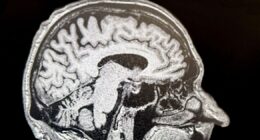
Glioblastoma tends to be more common in older adults. Men have a higher risk of developing this aggressive form of brain cancer compared to women.
Glioblastoma, often referred to as GBM, is a highly malignant and aggressive form of brain cancer that affects thousands of individuals worldwide. It is known for its rapid growth, invasive nature, and poor prognosis. While the exact causes of glioblastoma remain elusive, researchers have made significant strides in identifying potential risk factors that may contribute to the development of this devastating disease. Understanding these causes and risk factors is crucial in order to advance prevention strategies, improve early detection, and develop targeted treatments.
Talking to the HealthSite on World Brain Tumor Day, Dr Pradeep Mahajan, Regenerative Medicine Researcher & Founder, sheds light on some of the risk factors associated with glioblastoma.
Symptoms Of Glioblastoma
Glioblastoma, a type of brain cancer, can present with various symptoms. Common signs include persistent headaches, seizures, changes in cognitive function or personality, difficulty with speech or vision, nausea, vomiting, and balance problems. It’s important to note that these symptoms can vary depending on the location and size of the tumor and seeking medical attention for a proper diagnosis is crucial.
Causes And Risk Factors Of Glioblastoma
Several factors can contribute to the development of glioblastoma. Dr Mahajan lists out some of leading causes and risk factors of this type of brain cancer:
Genetics plays a significant role in glioblastoma development, with certain inherited conditions increasing the risk of developing the disease. The most well-known genetic disorder linked to glioblastoma is called neurofibromatosis type 1 (NF1). Individuals with NF1 have a higher risk of developing gliomas, including glioblastoma. Another genetic disorder, called Li-Fraumeni syndrome, caused by mutations in the TP53 tumor suppressor gene, has also been associated with an increased risk of developing glioblastoma.
- Exposure to Ionizing Radiation
Exposure to high doses of ionizing radiation is a known risk factor for glioblastoma. This can occur through various sources, including therapeutic radiation treatments for other types of cancer, such as radiation therapy for head and neck tumors. Additionally, individuals who have been exposed to radiation as a result of accidents or occupational hazards, such as nuclear plant workers or radiologists, may be at an increased risk. However, it is important to note that the vast majority of glioblastoma cases are not linked to radiation exposure.
READ RELATED: India Approves Gennova’s Omicron-Specific mRNA Vaccine
Glioblastoma can occur at any age, but it tends to be more common in older adults. The risk of developing glioblastoma increases with age, with the highest incidence observed in individuals over the age of 60. The reasons for this age-related increase are not yet fully understood, but it is believed to be influenced by a combination of genetic and environmental factors. Moreover, men appear to have a slightly higher risk of developing glioblastoma compared to women, although the reasons for this disparity remain unclear.
Several environmental factors have been investigated for their potential role in glioblastoma development. Prolonged exposure to certain chemicals and substances has been suggested as a possible risk factor. For instance, exposure to pesticides, specifically organochlorine compounds, has been associated with an increased risk of glioblastoma. Occupational exposure to certain chemicals used in the petroleum, rubber, and plastic industries has also been linked to a higher incidence of glioblastoma.
Individuals with a family history of glioblastoma may have an elevated risk of developing the disease themselves. Research has identified certain genetic mutations that can be passed down through families and increase the susceptibility to glioblastoma. It is important to note that the overall contribution of family history to glioblastoma cases is relatively small, with most cases occurring in individuals without a family history of the disease.
- Immune System Deficiencies
Emerging evidence suggests that a weakened immune system may play a role in the development of glioblastoma. People with compromised immune systems, such as those with HIV/AIDS or individuals who have undergone organ transplantation and require immunosuppressive therapy, may have a greater chance of development.
Total Wellness is now just a click away.
Follow us on
window.addEventListener(‘load’, (event) => {
// $(document).ready(function(){
$(‘#commentbtn’).on(“click”,function(){
(function(d, s, id) { var js, fjs = d.getElementsByTagName(s)[0]; if (d.getElementById(id)) return; js = d.createElement(s); js.id = id; js.src = “//connect.facebook.net/en_US/sdk.js#xfbml=1&version=v2.3”; fjs.parentNode.insertBefore(js, fjs);}(document, ‘script’, ‘facebook-jssdk’));
$(“.cmntbox”).toggle();
});
// });
});








